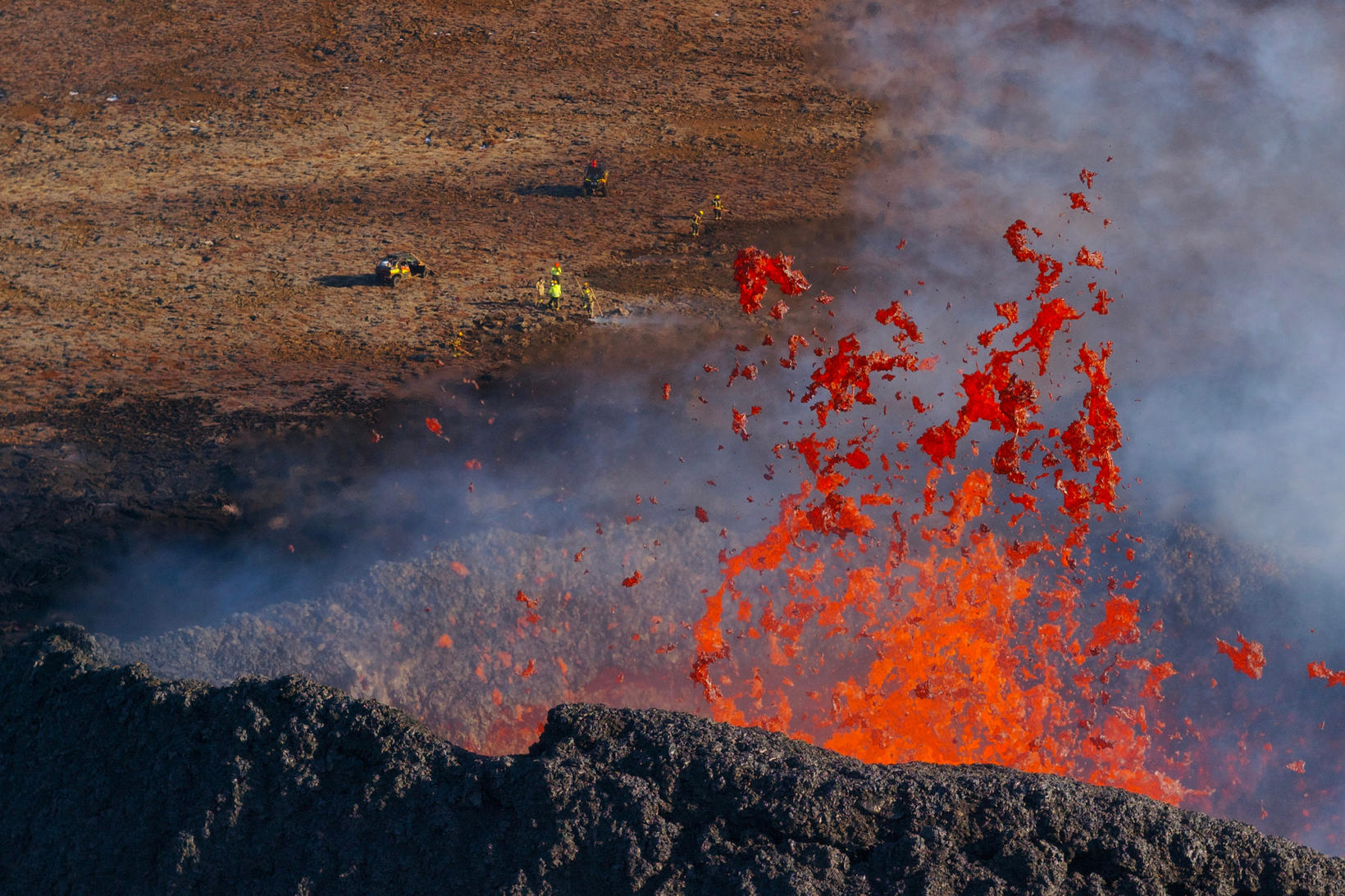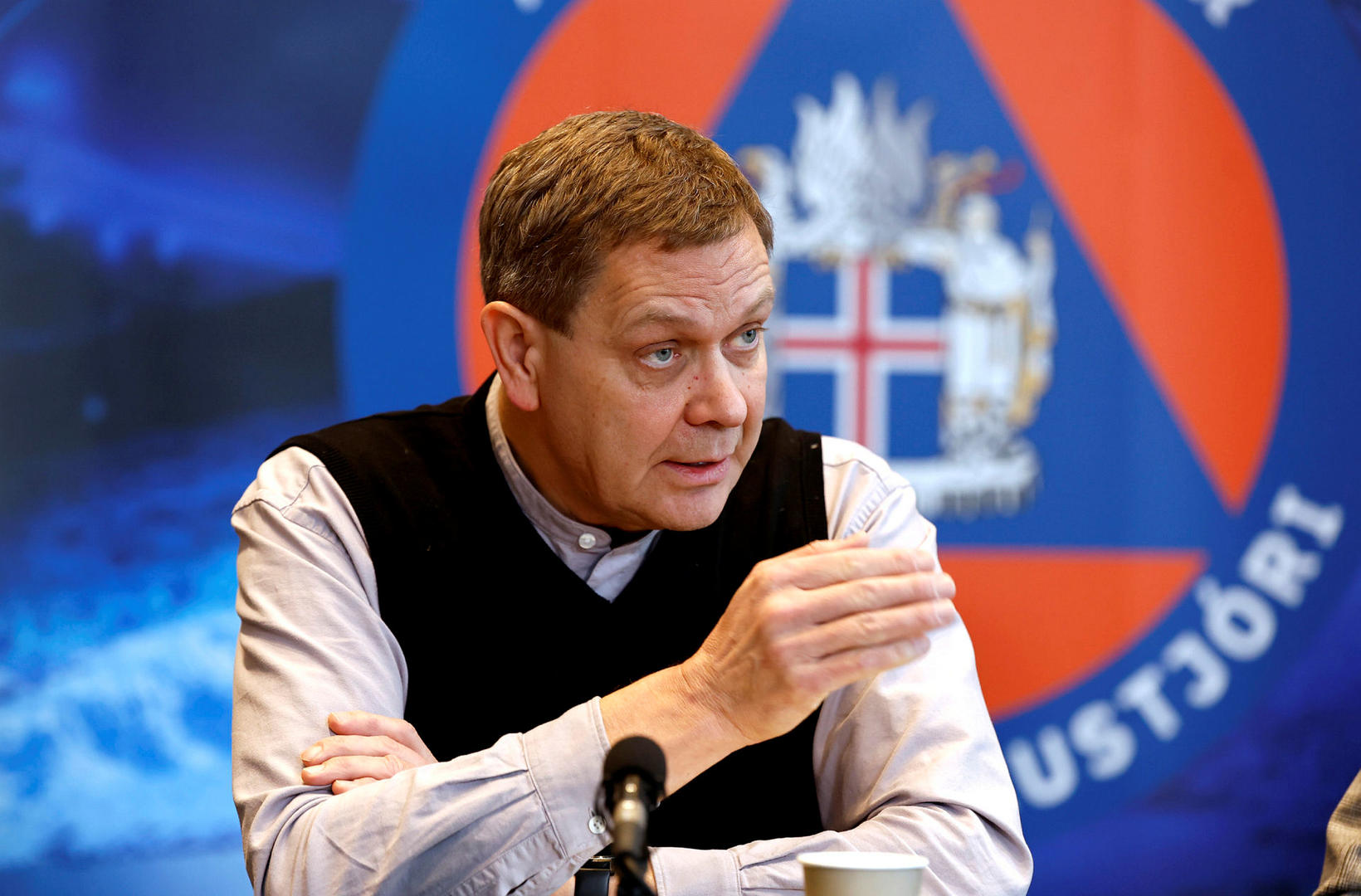More magma coming into the magma chamber, than is coming out
Inflation seems to have started in Svartsengi, although the end of the eruption at Sund-hnúkagígar is nowhere to be seen. More magma flows into the magma chamber under Svartsengi, than is flowing out of it and the inflow is not decreasing.
This is what Magnús Tumi Guðmundsson, professor of geophysics at the University of Iceland, told mbl.is.
The eruption at Sundhnúkagígar crater row started by force on March 16 and is probably the most powerful eruption on the Reykjanes peninsula so far. The eruption’s intensity was rapidly reduced but in the last few days, little has changed. Two craters are still active at the fissure, but mostly the action is limited to one of them.
“Most of the evidence indicates that this has been very similar for quite a while and we don’t see any signs of a great change. This is not a great flow of lava, it’s about 5-10 cubic meters per second – similar to the flow of lava in Mt Fagradalsfjall, but that is very common in such eruptions that last a while,” Guðmundsson says.
Magnús Tumi Guðmundsson, professor of geophysics at the University of Iceland. mbl.is/Eggert Jóhannesson
Direct flow through the magma chamber
“And it seems like there’s a direct stream through the magma chamber underneath Svartsengi. So we seem to be in a fairly stable state and it’s impossible to say how long this will last,” he adds.
Now, however, earth scientists are starting to see signs of inflation again.
“Inflation has been very small but the last two or three days are indicators that it has started again, so the inflow below is not decreasing,” he says. The flow of magma into the chamber is more stable than flowing out of it.
Therefore, there are no signs that the end of the eruption will soon be visible. Guðmundsson says it is possible that the volcanic eruption will last for several months, as it did in Mt Fagradalsfjall.
“We need to be prepared for this to last for a considerable amount of time.”
Map showing deformation from March 18 to April 3, showing that inflation of 3 cm can be detected in Svartsengi during that time frame. Map/The Icelandic Met Office
The lava could be moving north or into the ocean, but it would take time
“This fourth eruption in the last four months on the Sundhnúkagígar crater row has been up to ten times longer than its predecessors,” Guðmundsson said. “But it has not yet lasted one-tenth of the length of Mt Fagradalsfjall eruption,” he added.
What happens if this goes on much longer? Guðmundsson suggests a few scenarios.
“The lava could, for example, build up, move into a continuous flow along the defense walls and could even end up in the ocean. Another scenario is that the lava crosses the defense walls. A third scenario would be that the lava builds up a lot and flows northwards.
There is no way to say how far the lava flow will go if it lasts for a month. But if it is similar to what it has been, the entire flow will be very slow,” he added. “Then it could also stop soon.”
“A long game”
The magma flow under Svartsengi has been stable in the surrounding area for roughly five months, from late October.
“You could say that this is a series of events that has been going on for three or four years, but not stable. Then it’s just a question of how long it’s going to continue like this. But it’s not an unlikely scenario that this eruption situation, with either a long-lasting steady eruption or repeated small eruptions, [...] will continue until the summer or the autumn. There’s no way to tell,” he says.
“But this is, however, something we have to prepare for. We need to see this in terms of a long game.”













